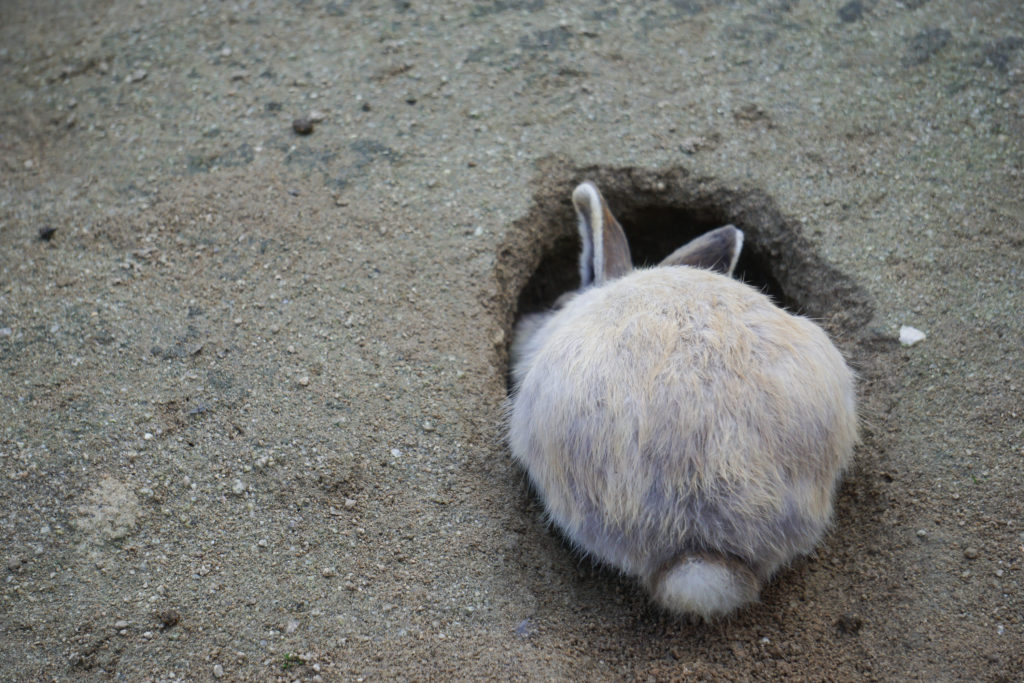I have been working from home quite a lot recently.
And by that what I actually mean is; I haven’t stood in front of a group of students since mid-March.
Some of the work has involved delivering our new Live Online NEBOSH National General Certificate courses (see here).
Delivering courses through a virtual classroom environment has taken a bit of getting used to. But my students have been fantastic and we have enjoyed the various challenges presented by circumstances.
Falling down rabbit holes so you don’t have to
As always there have been various issues and questions raised and these have led me to the inevitable rabbit holes that I so love to fall down. So I thought that in this blog I might share a few points of interest that have cropped up.
Alcohol hand rubs
Alcohol (ethanol) is an organic solvent that can pass through the skin and into the tissues and blood stream on skin contact. So routine application of alcohol based hand rubs can, and will, put alcohol into your blood stream. The levels of alcohol are relatively low but are detectable. Take a look at this 2007 paper for the result of a study looking at this issue for health care workers required to make frequent use of alcohol hand rubs:
https://bmcinfectdis.biomedcentral.com/articles/10.1186/1471-2334-7-117
The highest blood alcohol concentration measured was approximately 30 mg/L (or 3mg alcohol/ 100 ml blood)). And just for info the current drink drive alcohol limits are 80 mg/100 ml in England, Wales and Northern Ireland and 50 mg/ 100 ml in Scotland.
For many of us the issue with frequent use of these hand rubs is that they de-fat the skin and lead to dry skin and dermatitis.
Legionella infection
Legionnaires’ disease (a form of pneumonia) can be caused by the inhalation of small droplets of water contaminated with the bacteria Legionella pneumophila. These small droplets, or mist, can be created by spraying contaminated water through nozzles (such as might happen inside the cooling tower of an air conditioning system) or might be created simply by spraying water through a tap or hose.
I had not appreciated that the bacteria can also be aspirated by the action of sucking ice cubes. See this post for further info:
And for something a little more authoritative, and far more comprehensive, try this from the WHO:
https://www.who.int/water_sanitation_health/emerging/legionella.pdf
(see paragraph 2 on page 90)
And thanks to Tom for flagging that one up.
First aider liability
People often worry about being held liable if they were to give first aid to a casualty and caused some form of harm.
Take a look at this website for a detailed consideration of various aspects of first aid and law:
https://www.realfirstaid.co.uk/canibesued
The articles that come before and after this one are also worth a read.
Thanks to Caroline for indirectly asking the question.
Confined spaces multiple fatalities
Confined spaces are, by their very nature, places where things can go disastrously wrong very quickly. The death of Ben Pinkham in a tank explosion at the Princess Yachts International boatyard in my local city of Plymouth being a rather grim example:
http://news.bbc.co.uk/1/hi/england/cornwall/3933147.stm
Unfortunately there are often multiple casualties or fatalities. Either because there are several workers inside the confined space when things go wrong. Or because would-be rescuers are overcome or trapped. This was tragically illustrated in the fatalities in a slurry tank on a farm in Northern Ireland in 2012. This event made the national headlines because one of the deceased was Nevin Spence the rugby international.
See this newspaper report for an account of the tragedy:
Agriculture
The farming industry was in the spot-light again recently for all the wrong reasons. The release of the HSE annual statistics package for 2019-20 puts agriculture at the top of the league table in term of fatal accident rate. Not a good place to be.
See here for the HSE agriculture and general stats packages:
https://www.hse.gov.uk/agriculture/resources/fatal.htm
https://www.hse.gov.uk/statistics/pdf/fatalinjuries-20.pdf
And finally…
As I was driving with my daughter the other day she remarked on how big the round hay bales on the trailer in front of us were, “They look really heavy. You don’t want that falling off onto your car do you.”
No you don’t; they can weigh up to a tonne each.
It reminded me of the death of ELO musician Mike Edwards in 2010 in Totnes, Devon. He was killed when a 600 Kg round bale that had just been moved rolled down a sloping field, through a hedge and onto his van whilst he was driving by.
See here for a couple of news report about the incident and the outcome of the trial:
https://www.theguardian.com/music/2012/nov/20/farmers-cleared-death-elo-cellist
Stay safe
Jim

Dr Jim Phelpstead BSc, PhD, CMIOSH
RRC Consultant Tutor
